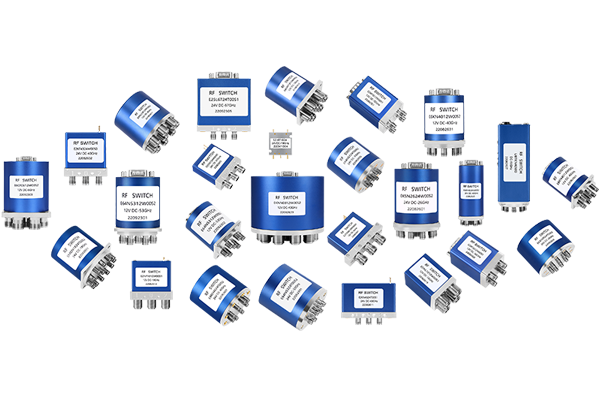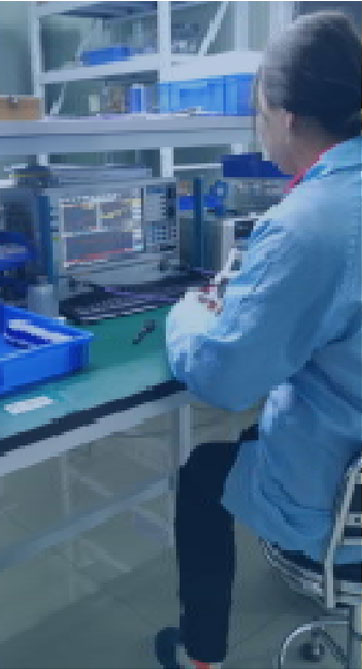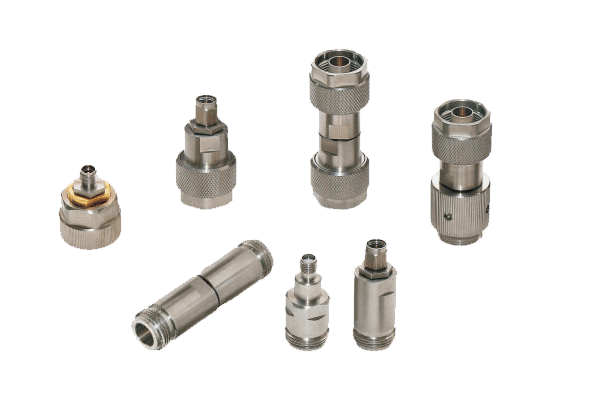
Pin diodes now serve as significant elements in high-bandwidth applications owing to their fundamental material and electrical qualities Their swift switching ability coupled with low parasitic capacitance and modest insertion loss makes them ideal for switch modulator and attenuation applications. The essential process enabling PIN diode switching is manipulating current through the diode using a biasing voltage. A change in bias voltage transforms the depletion-region width of the p–n junction, affecting conductance. Tuning the bias current allows PIN diodes to switch effectively at RF frequencies with reduced distortion
For applications demanding exact timing and control PIN diodes are typically incorporated into complex circuitry They can function inside RF filters to permit or attenuate targeted frequency bands. Their competency in managing strong signals qualifies them for amplifier power splitter and signal source applications. Miniaturization and improved efficiency of PIN diodes have extended their usefulness across wireless systems and radar platforms
Coaxial Switch Design Principles and Analysis
Engineering coaxial switches requires meticulous handling of diverse design variables Coaxial switch effectiveness depends on the switch kind frequency of operation and insertion loss metrics. Minimizing insertion loss and enhancing isolation are primary goals for coaxial switch engineering
Assessment of switch performance typically measures metrics including return loss insertion loss and isolation. These values come from combined use of simulations theoretical predictions and experimental validation. Accurate performance evaluation is key to ensuring coaxial switches operate dependably
- Simulation, analytical modeling and experimental testing are widely utilized to examine coaxial switch designs
- Switch performance may be significantly affected by thermal conditions impedance mismatches and production tolerances
- New advances trends and innovations in coaxial switch engineering aim to enhance performance metrics while cutting size and power consumption
Low Noise Amplifier LNA Design Optimization
Enhancing the performance efficiency and gain of a Low Noise Amplifier is vital for preserving signal integrity in many systems That involves meticulous transistor choice biasing arrangements and topology selection. Sound LNA architectures control noise contributions and support strong low-distortion amplification. Modeling and simulation tools enable assessment of how transistor choices and biasing alter noise performance. Lowering the Noise Figure is the aim, indicating enhanced preservation of input signal over generated noise
- Selecting devices that exhibit low intrinsic noise is a primary consideration
- Setting proper and optimal bias parameters is necessary to suppress noise in active devices
- Circuit topology significantly influences overall noise performance
Tactics like impedance matching noise mitigation and feedback regulation advance LNA performance
Signal Path Control Using Pin Diodes

Pin diode switch arrangements provide adaptable and low-loss routing for RF signal management These semiconductors can be rapidly switched on or off allowing dynamic path control. Key benefits include minimal insertion loss and strong isolation to limit signal deterioration during switching. Typical applications include antenna switching duplexing and RF phased arrays
Operation relies on changing the device resistance via applied control voltage to switch paths. In the off deactivated or open state the diode presents a high resistance path blocking signal flow. A controlled forward voltage lowers resistance and enables unimpeded RF signal flow
- Moreover PIN diode switches combine quick transitions low consumption and compact form factors
Diverse design options and architectures for PIN diode networks allow implementation of sophisticated routing functions. Combining multiple switch elements makes possible dynamic switching matrices enabling flexible routing
Coaxial Microwave Switch Testing and Evaluation

Thorough assessment and testing of coaxial microwave switches are necessary to guarantee reliable system operation. Many various diverse factors determine the switches’ performance including insertion reflection transmission loss isolation switching speed and bandwidth. Comprehensive assessment includes testing these parameters under multiple operating environmental and test scenarios
- Additionally the evaluation should incorporate reliability robustness durability and capacity to handle severe environmental conditions
- Ultimately the conclusions of a detailed evaluation deliver important valuable critical intelligence for choosing designing and refining switches for specific tasks
Thorough Review of Noise Reduction Methods for LNAs
LNA circuits are key elements in RF and wireless systems, amplifying faint signals while minimizing noise additions. The article delivers a wide-ranging examination analysis and overview of methods used to reduce noise in LNAs. We explore investigate and discuss principal noise contributors like thermal shot and flicker noise. We also cover noise matching feedback network techniques and ideal bias strategies to mitigate noise. The review highlights recent progress in LNA design including new semiconductor materials and circuit concepts that lower noise figures. By giving a clear understanding of noise reduction principles and practices this article aims to assist researchers and engineers in developing high performance RF systems
Applications of PIN Diodes for Fast Switching

They possess unique remarkable and exceptional qualities beneficial for high speed switching Small capacitance together with low resistance enables rapid switching to satisfy precise timing needs. PIN diodes’ adaptive linear voltage response permits precise amplitude modulation and switching. Their adaptability flexibility and versatility qualifies them as suitable applicable and appropriate for broad high speed uses Typical domains include optical communication systems microwave circuitry and signal processing hardware and devices
IC Based Coaxial Switch and Circuit Switching Technologies
Integrated coaxial switch IC designs improve signal routing processing and handling across electronic systems circuits and devices. These specialty ICs are engineered to control manage and direct signal flow through coaxial cables offering high frequency performance and low latency propagation insertion times. IC miniaturization enables compact efficient reliable and robust designs ideal for dense interfacing integration and connectivity needs
- By meticulously carefully and rigorously applying these methods developers can produce LNAs with superior noise performance enabling sensitive reliable electronics Through careful meticulous and rigorous application of such methods engineers can design LNAs with top tier noise performance enabling dependable sensitive systems Through careful meticulous and rigorous application of such methods engineers can design LNAs with top tier noise performance enabling dependable sensitive low-noise amplifier systems By meticulously carefully and rigorously applying these methods developers can produce LNAs with superior noise performance enabling sensitive reliable electronics
- Application fields encompass telecommunications data communications and wireless networking
- Aerospace defense and industrial automation represent important application areas
- These technologies appear in consumer electronics A V gear and test and measurement setups
Design Tips for Low Noise Amplifiers in mmWave Bands

mmWave LNA challenges include significant signal attenuation and greater sensitivity to noise sources. Parasitic effects are dominant at mmWave thus careful layout techniques and component choices are crucial. Minimizing mismatch while maximizing gain is critical essential and important for mmWave LNA operation. Devices such as HEMTs GaAs MESFETs and InP HBTs are important selections to meet low noise figure goals at mmWave. Furthermore the design and optimization of matching networks is crucial to securing efficient power transfer and impedance match. Careful management of package parasitics is necessary to prevent degradation of mmWave LNA performance. The use of low-loss lines and careful ground plane planning is essential necessary and important to limit reflections and sustain bandwidth
PIN Diode RF Characterization and Modeling Techniques
PIN diodes function as crucial components elements and parts across various RF switching applications. Precise accurate and comprehensive characterization of these devices is essential to support design development and optimization of reliable high performance circuits. Included are analyses evaluations and examinations of electrical voltage and current characteristics such as resistance impedance and conductance. The characterization includes frequency response bandwidth tuning capabilities and switching speed latency or response time
Furthermore moreover additionally accurate model and simulation development for PIN diodes is vital essential and crucial for behavior prediction in RF systems. Various modeling approaches such as lumped element distributed element and SPICE models are used. Appropriate model choice depends on specific application needs and the required desired expected accuracy levels
Cutting Edge Methods for Low Noise Amplifier Design
Designing LNAs is a crucial task requiring careful attention to circuit topology and component selection to reach optimal noise performance. Recent emerging and novel semiconductor advances have opened the door to innovative groundbreaking sophisticated design techniques that cut noise significantly.
Examples of techniques are implementing employing and utilizing wideband matching networks choosing low noise transistors with strong intrinsic gain and optimizing biasing schemes strategies and approaches. Furthermore additionally moreover advanced packaging methods and thermal management solutions play a vital role in reducing external noise contributions. By meticulously carefully and rigorously adopting these practices designers can deliver LNAs with excellent noise performance supporting reliable sensitive systems
